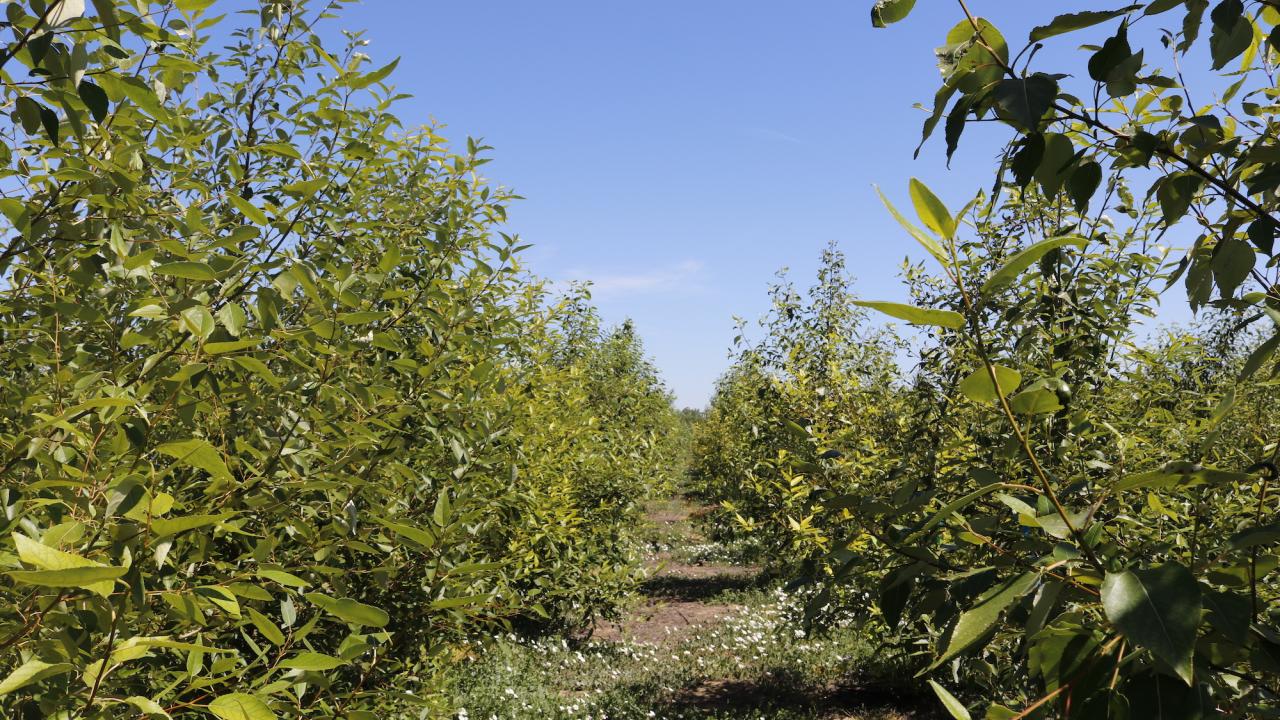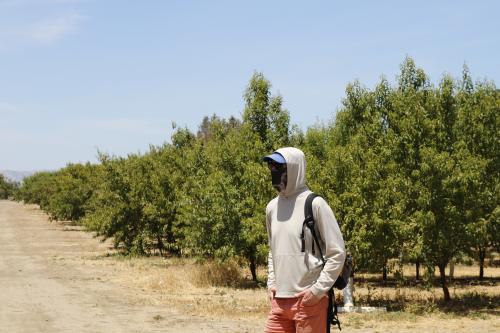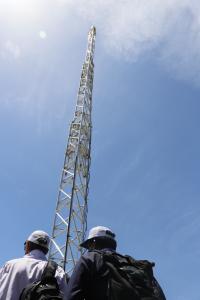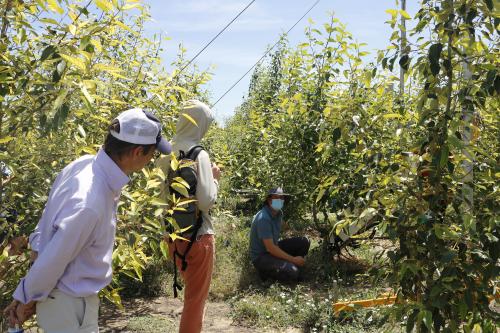
Nature editor visits UC Davis to learn about bioenergy poplar project
Project seeks to create trees that meet challenges of future climates
Poplar trees stand to transform the bioenergy market – a promising means to mitigate climate change – for the better. Michael White, an editor for the peer-reviewed science journal Nature, recently met with members of the Taylor Lab from the University of California, Davis for a tour to learn how they are developing drought-tolerant poplar trees positioned to sustainably and cost-effectively meet the challenges of our climate emergency.

“It was wonderful to meet Nature editor Michael White amongst the poplar trees that we planted in March 2020 - trees that are now more than eight feet tall,” Gail Taylor said, distinguished professor in and chair of the Department of Plant Sciences. “There is no better way to show just how significant fast-growing poplar can be in the circular economy, with potential to produce liquid aviation fuel, to be used for heat and power and in carbon capture and sequestration technologies.”
Sun overhead, the tour began beside 7,000 densely planted poplars on a dirt road in western Davis. The poplar field is located at one of four centers funded by Department of Energy to develop liquid fuel from plant and microbial based systems.
And it is at this center where over 1,000 unique trees collected from wet and dry regions of the western USA are being studied by the Taylor Lab to identify natural genetic variation in drought tolerance. The data resulting from this research will be harnessed by the research team to develop poplars resilient to the challenges of future climates.
Walking through the rows of trees, with steps alternating on cracked earth and cover crops, White expressed both interest and surprise that poplar trees can be grown on poor quality land. In particular, he noted the immense potential of a bioenergy crop that doesn’t rely on agricultural land, and, thus, doesn’t disrupt current food systems.
The tour of the experimental project continued, with members of the Taylor Lab demonstrating some of the innovative research tools they have employed so far.

“This new experiment is providing us with a unique opportunity to quantify the potential of these trees but is also acting as a testbed for new, innovative and unproven technologies that are needed if we are to use these trees as way to help address the climate emergency,” Taylor said.
These innovative technologies included three towers equipped with state-of-the-art cameras, enabling minute-by-minute visible and thermal images of the trees to help quantify canopy greenness and senescence – two factors known to be indicators of productivity.
These same towers, with one soaring overhead at 120-feet, are also being used to measure photosynthesis of individual trees using the latest Solar Induced Fluorescence (SIF) technologies.
Of particular note was the demonstration of budget CO2 sensors developed at UC Davis. These sensors are providing game-changing opportunities to quantify the carbon mitigation potential of forest trees.
In addition to the Taylor Lab research group, members from Oak Ridge National Laboratory were present at the tour to explain their role on the project and to collect on-site leaf samples.

The Oak Ridge National Laboratory team, functioning as collaborators on the project, are employing their computational resources to complete biochemical and molecular analyses in order to identify genes for drought tolerance, as early leads for gene editing approaches in poplar.
“It was a pleasure to bring this large, multidisciplinary group together to meet Michael White from Nature,” Taylor said. “The day sparked several discussions for further collaborations and publications that the team are now progressing.”
